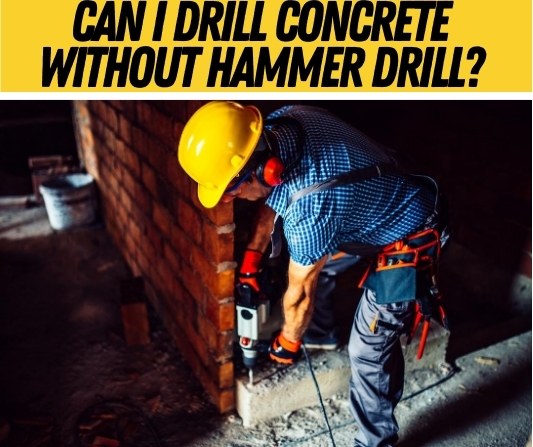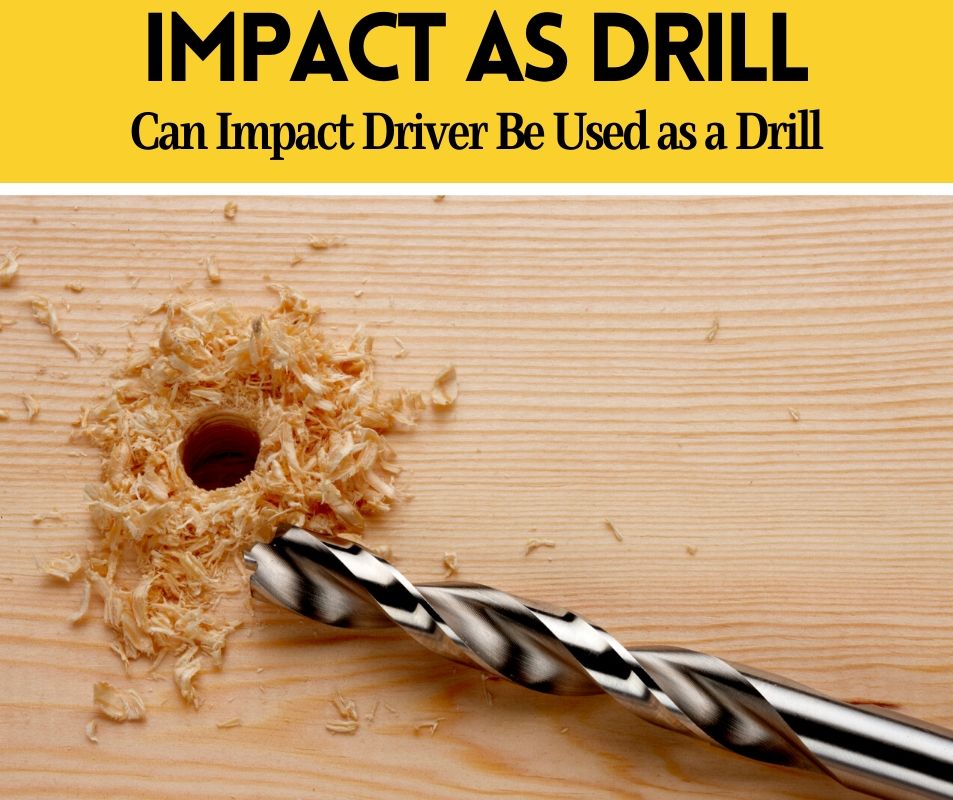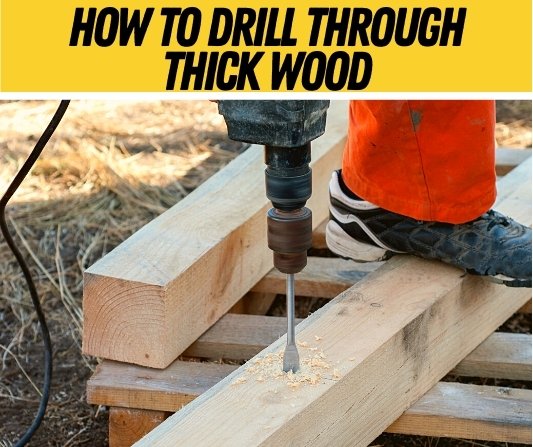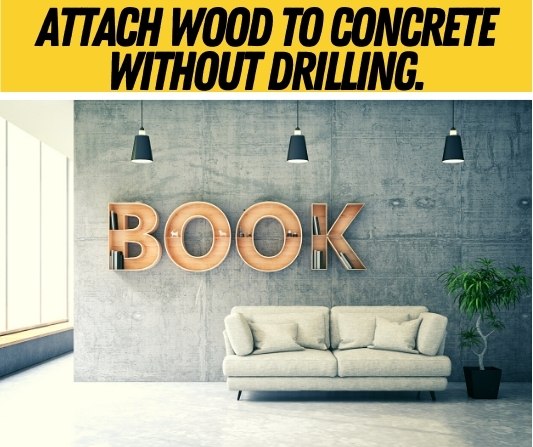 Drilling into concrete requires a hammer drill and masonry drill bits, which can easily set a hobbyist back $150.
Drilling into concrete requires a hammer drill and masonry drill bits, which can easily set a hobbyist back $150.
To avoid such costs, especially if it is for a one off job, it would be easier to use tools you already have, or tools that are cheaper to obtain.
But what tools can you use to attach wood to concrete without a drill? Is it as effective?
How To Attach Wood To Concrete Without Drilling
Attaching wood to concrete without drilling is possible, and there are four possible ways of doing it. The first one is to use a sledgehammer to create a similar incision into the concrete, ready for the placing of nails. An alternative method to the sledgehammer is using an air-powered nail gun, that can insert the nails into the concrete and wood directly. The last two methods are more ideal for those who are renting, and making holes in the concrete would go against a tenancy agreement. These options are using glue, and sticking it to the surface of the wall or ceiling, and using industrial Velcro, which is more suitable for hanging or fixing lighter objects, i.e. framed photos.
However, it is important to do each method carefully, otherwise you could do damage to the wall or the object you are attempting to attach it to. Sourcing a drill from a neighbor may be your best option, but if a drill cannot be borrowed, then one of these four methods will be your best solution.
4 Ways To Attach Wood To Concrete Without Drilling
-
Sledgehammer
Using a sledgehammer and concrete nails, that are thick enough to both fully penetrate the wood and the concrete by an inch, can simulate the use of hammer drill and yield similar results. Concrete nails should be used for this task as they are designed for piercing concrete. They are made out of steel, which is why a sledgehammer is being used instead of a regular hammer. If you were to use concrete nails with a steel hammer, there would be a danger of sparks coming from the contact between the two steel objects.
You’ll want to ensure you hit the nails straight and with enough power to penetrate the concrete. This makes it more difficult to ensure the nail is flush with the wood, but it will make the wood is placed firmly and securely. Using short, controlled and heavy hits to the nail will help achieve the ideal fit. Having someone hold the wood in place, outside of the hammer’s range, can help prevent it slipping while you strike the nail.
-
Air-Powered Nail Gun
An air-powered nail gun may not be a tool you have yourself, but may be one you can acquire from a friend or neighbor. If they don’t have a hammer drill, this is your next best option, as it achieves similar effects to the sledgehammer, but makes it far easier on the behalf of the user.
There are two things you want to ensure before you begin using a nail gun. The first is that the concrete, that you are inserting the nails into, is not too brittle. Concrete that is too brittle can easily become cracked when using an air-powered nail gun. The second is that you want to become familiar with the tool before using it. Speak to the person you are borrowing it from, read the manual, or watch a tutorial video. An air-powered nail gun is hefty tool, and you do not want to wield it wrong, or risk damaging the wall you are attaching wood to.
Both the two methods mentioned so far are suitable for hanging heavy objects. As long as you space the nails out across the span of the wooden object, at reasonable distances apart. You can hang shelves, hold furniture to the wall, and fit hooks so that you can hang other objects.
-
Industrial Velcro
While industrial Velcro is not the most ideal solution, it can be a quick fix for those living in rented property. It is as simple as attaching the opposing pieces of Velcro to both the item you are placing on the wall, and the wall itself, and pressing firmly, to ensure it is correctly fixed. The Velcro should not need replacing, as industrial Velcro is heavy-duty, but can become worn after several years.
An issue you will potentially run into is when removing the Velcro is the marks it leaves behind. The strength of this method comes from the adhesive that sticks to the wall, which will almost definitely partially remove whatever layer is foremost on the wall. Whether this is paint or plaster, you will have a scuff leftover from the Velcro’s time on the wall. This is not so much a problem for those who are in a rented property for several years, as you may be repainting and redoing walls before you leave anyway.
This method is ideal for lighter objects, such as framed photos, wooden-backed mirrors and small items of furniture. Anything heavier and you risk the object pulling the tape off the wall with it, and damaging the object in the process.
- Epoxy Glue
Epoxy glue is another effective method for attaching wood to a wall, ideal for attaching shiplap and other decorative paneling. The first step is to ensure that the wood and the wall are both bone dry, as you want to create maximum adhesion when sticking wood to concrete. Then, place a generous amount of glue, but not too much that lots will come out the side when placing the wood onto the concrete. A small amount should come out, which can be dabbed away with a cloth or tissue, but too much can cause a mess on the wall. Then, by either using clamps or placing something heavy against it, leave the glue to dry.
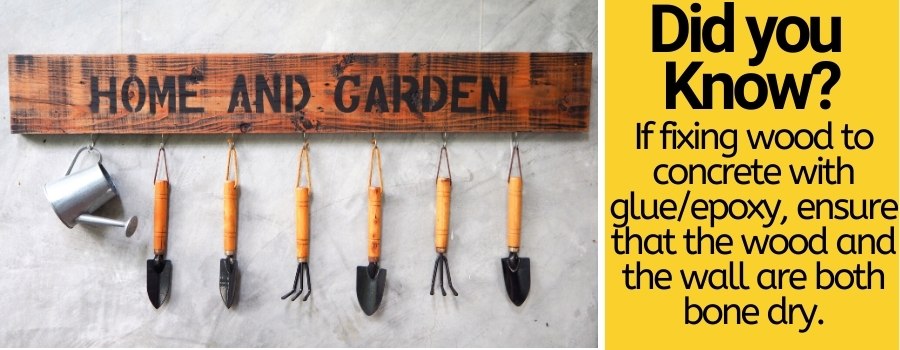
Can you glue wood to concrete?
As mentioned above, it is possible to glue wood to concrete. You want to use epoxy glue, as it is the most suitable glue to use between wood and concrete. This is because it adheres to both surfaces well, and ensures the two are bonded strongly together. You can get fast-setting epoxy glue, which is handy for when attaching wood to the wall or ceiling, where it is harder to sustain pressure on it when drying.
How effective is it
Attaching wood to concrete via glue is effective, and more so than Velcro. Using nails with a drill would be the most effective method, and second to that would be the air-powered nail gun, providing that the concrete doesn’t crack, but glue is an effective method for attaching wooden paneling to a wall. Epoxy is designed to last, and so you shouldn’t worry about having to replace the paneling after several years. The only thing that could affect the adhesion is dramatic changes in temperature or moisture.
What glue will stick wood to concrete
Although epoxy glue is the recommended glue to seek for and use when attaching wood to concrete, you can use construction adhesive, which is a good alternative on a budget. The adhesion will not be incredibly strong, and should not be used to hold any heavy weight. For decorative purposes, the adhesion will hold fine. One solution is to use a combination of both glue and air-powered nails, as the two together will create an extra strong adhesion.
Will Liquid Nails hold wood to concrete
Using heavy duty liquid nails is a good adhesive to use when gluing wood to concrete, however it shouldn’t be used if the wood needs to take a lot of weight, i.e. shelves. It can be effective when used to attach a framed photo to a wall, or some wood paneling. Epoxy would be preferable still, as it is designed specifically for use between wood and concrete. Before using liquid nails, ensure the concrete and word are dry. Wet or partially set concrete will not work with liquid nails.
Also read: Can You Install Shiplap Directly To Studs
How to hang something on concrete ceiling without drilling
The method used to attach something from the ceiling depends on how heavy the object is, or how much weight it needs to be able to hold. If the object needs to take a considerable amount of weight, then drilling is still the preferred option, but sledgehammering nails, or using the air-powered nail gun, can be an effective way to attach a hanging object. You want check the thickness of the concrete ceiling, and make sure it can withstand the aforementioned methods without cracking.
Alternatively, for decorative purposes, such as wood paneling, epoxy glue or adhesive will work fine, you just need to make sure you put pressure on the wood while it is drying, to ensure the glue adheres the two properly.
Related: How To Hang on Brick Wall Without Drilling
Hanging shelves on concrete walls without drilling
Shelves will need to take considerable weight, and for this reason using the sledgehammer or air-powered nail gun methods are the only recommended methods. Epoxy, industrial Velcro or liquid nails would not give the minimum amount of strength needed to support a shelf. Additionally, using both air-powered nails and epoxy glue is a good idea, to guarantee a superior adhesion between the concrete and shelf.

